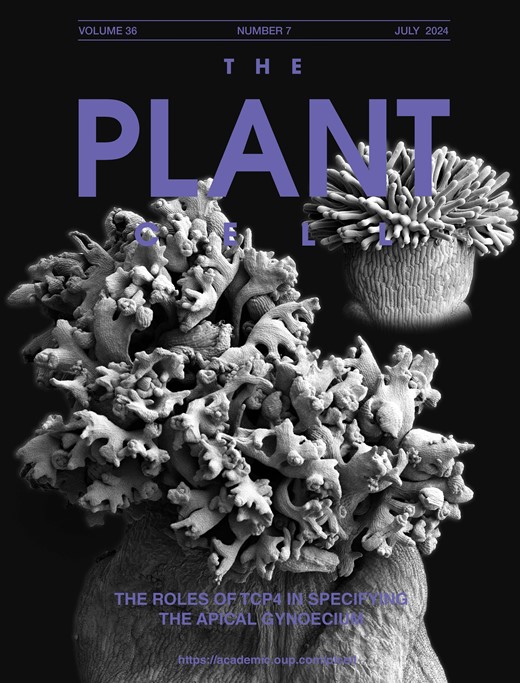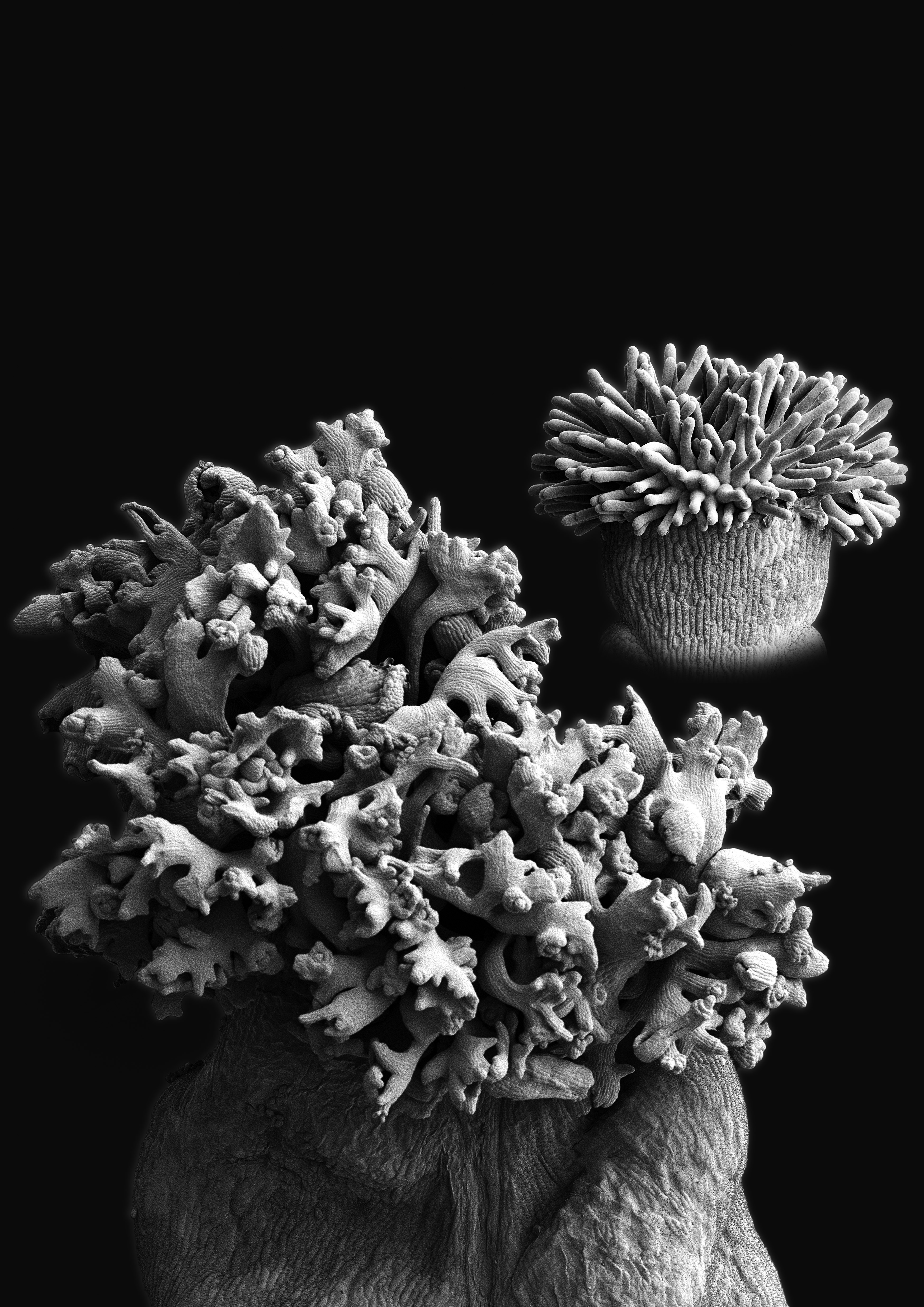
Cover image

Volume 36, Issue 7, July 2024
In Brief
From the archives: On DNA maintenance—SWI/SNF chromatin remodeling complexes, DNA damage repair, and transposon excision repair mechanisms
Playing the field: The molecular basis of fruit morphology-based bet-hedging
From algae to apples: The structural and functional conservation of NLRs
Dissecting and redesigning enhancers of photosynthesis genes
Bridging the perception: ICE1 links cold sensing and salicylic acid signaling
The chill coalition: A key regulatory node connecting salicylic acid and brassinosteroids in freezing tolerance
Aw, snap! How reversible protein lipidation helps plants deal with sudden temperature dives
Keep it cool: Unveiling the involvement of maize HEAT SHOCK FACTORS and CELLULOSE SYNTHASES in heat stress regulation
Large-scale Biology
The dimorphic diaspore model Aethionema arabicum (Brassicaceae): Distinct molecular and morphological control of responses to parental and germination temperatures
Aethionema arabicum is an outstanding model to understand the plastic developmental and environmental control of the dimorphic seed/fruit bet-hedging trait relevant to adaptation to abiotic stress.
The N-terminal domains of NLR immune receptors exhibit structural and functional similarities across divergent plant lineages
Plant immunity mediated by a major class of immune receptors is conserved among flowering and nonflowering plants, and these receptors have domains with similar structures and functions.
The transcriptome landscape of developing
barley seeds
A transcriptomic atlas for developing barley seeds provides in-depth insight into the gene regulation in embryo, endosperm, and seed maternal tissues.
Research Articles
The adaptor protein ECAP, the corepressor LEUNIG, and the transcription factor BEH3 interact and regulate microsporocyte generation in Arabidopsis
The ECAP–LEUNIG–BEH3 transcription activator complex epigenetically regulates SPOROCYTELESS expression to modulate microsporocyte generation during pre-meiotic anther development in Arabidopsis.
Arabidopsis ribosomal RNA processing meerling mutants exhibit suspensor-derived polyembryony due to direct reprogramming of the suspensor
Arabidopsis meerling-1 mutant exhibits suspensor-derived polyembryony due to delayed processing of the 18S preribosomal RNA, resulting in reprogramming of the suspensor toward embryonic fate.
Plant enhancers exhibit both cooperative and additive interactions among their functional elements
Cooperative and additive interactions among functional regions harboring transcription factor binding sites control the activity of 3 light-responsive plant enhancers.
INDUCER OF CBF EXPRESSION 1 promotes cold-enhanced immunity by directly activating salicylic acid signaling
The NPR1–TGA3–ICE1 regulatory module represents an important step in salicylic acid signaling during cold-activated resistance of plants to pathogen attack.
Methyltransferase TaSAMT1 mediates wheat freezing tolerance by integrating brassinosteroid and salicylic acid signaling
Transcription factor TaBZR1 directly activates methyltransferase-encoding TaSAMT1-B under freezing stress by recruiting a histone acetyltransferase and increasing its histone H3 acetylation.
The S-acylation cycle of transcription factor MtNAC80 influences cold stress responses in Medicago truncatula
The S-acylation and de-S-acylation of transcription factor MtNAC80 under cold stress form a key S-acylation cycle that contributes to the establishment of cold tolerance in Medicago truncatula.
The heat shock factor 20-HSF4-cellulose synthase A2 module regulates heat stress tolerance in maize
The transcription factor ZmHSF20 acts upstream of ZmHsf4 and Cellulose synthase A2, which positively regulate cell wall development under heat stress, thereby improving maize heat tolerance.
Arabidopsis transcription factor TCP4 controls the identity of the apical gynoecium
High-order complexes of transcription factors synergistically promote auxin biosynthesis, finely tuning the development of the apical gynoecium in Arabidopsis.
The AGAMOUS-LIKE 16–GENERAL REGULATORY FACTOR 1 module regulates axillary bud outgrowth via catabolism of abscisic acid in cucumber
CsAGL16 positively regulates axillary bud outgrowth in cucumber by directly promoting CsCYP707A4-mediated ABA catabolism, and CsGRF1 interacts with CsAGL16 and antagonizes the CsAGL16-mediated CsCYP707A4 activation.
Cytochrome b5 diversity in green lineages preceded the evolution of syringyl lignin biosynthesis
Cytochrome b5 D, an electron donor supporting ferulate 5-hydroxylase–catalyzed syringyl lignin biosynthesis, arose in charophyte algae prior to terrestrialization and before the emergence of vascular plant ferulate 5-hydroxylases.
The H3K4 demethylase JMJ1 is required for proper timing of flowering in Brachypodium distachyon
Jumonji-mediated H3K4 demethylation of genes involved in regulating flowering time plays a role in the proper timing of flowering in the temperate grass Brachypodium distachyon.
















